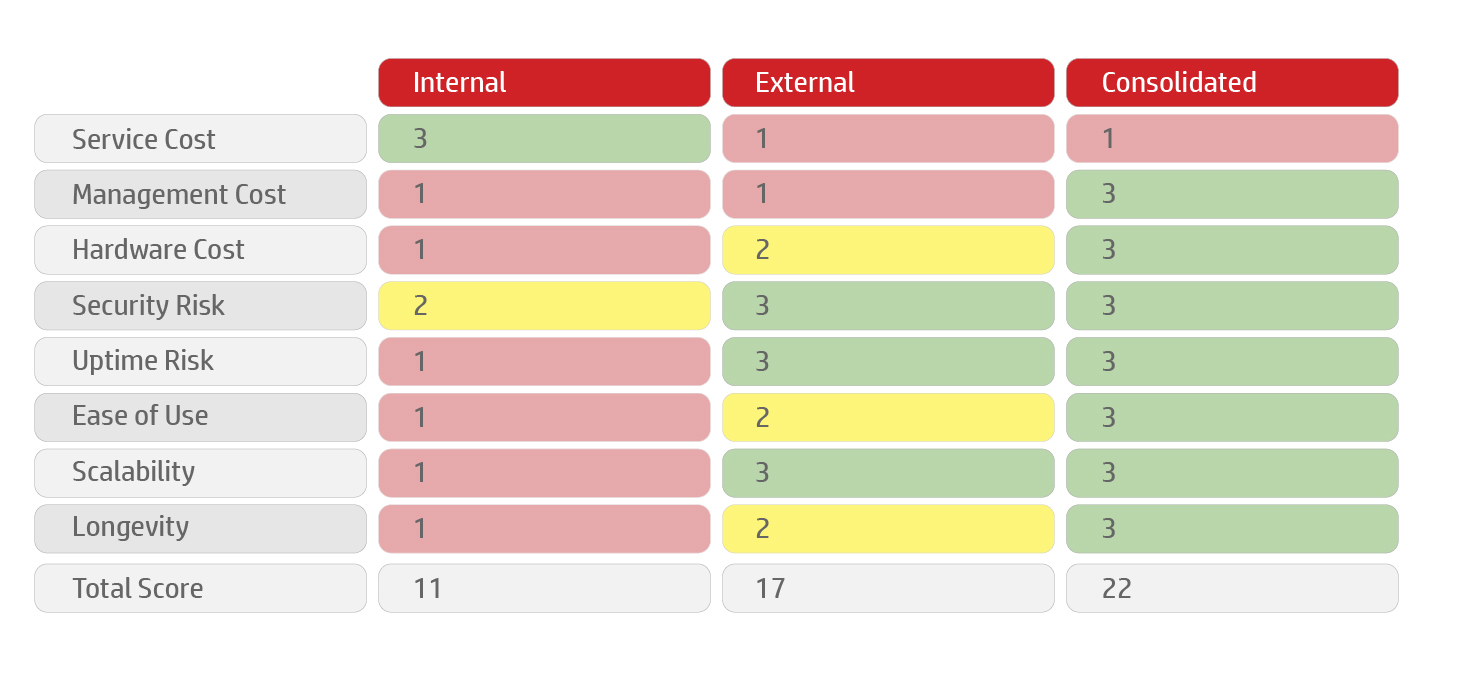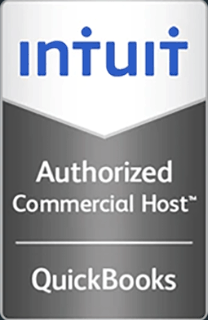Consolidated, Multi-Vendor, or In-House IT: Which Solution is Best for Your Business?
Your IT infrastructure is like the backbone of your company – without it, your business can’t stand. While there are multiple solutions available to help you conduct your business, there are clear pros and cons to each model. If you’ve found that your current IT solution is not serving you the way it should, it may be time to make a change. That decision, though, comes with an investment of both time and money – neither of which do you want to waste in vain.
In this article, we’ve compiled a list of features common to IT infrastructure, as well as a breakdown of each based on the three major IT models available: in-house, multi-vendor, and consolidated. If you’re considering a different IT solution, give this a read to learn valuable information that can help you make a strong decision for your company.
The IT Models Defined
In-House IT
In-house IT means that all your servers, data, and applications are located in your office, and are often tied directly to a physical in-office computer. Remote work is possible, though not convenient, and you are responsible for the regular replacement of your hardware as it breaks down.
Multi-Vendor IT
Those using multiple vendors for their IT needs typically house one or two applications with one service provider, and the rest of their applications with another. Companies using this model may also still retain some of their in-house IT infrastructure, as well as outsourcing to a managed service provider.
Consolidated IT
This model allows for all IT needs to be met under one service provider’s roof. Consolidated IT (also known as single-vendor IT) gives your company increased data protection, security, and uptime, and allows you to budget your IT as an operational expense instead of a capital expenditure.
How They Measure Up
Service Cost
Internal
In-house IT doesn’t require an external service provider, therefore the service cost is minimal. In-house will save you money on service cost, but the tradeoff is that it will cost you more in other areas.
Multi-Vendor
Multi-vendor IT requires that you enter into multiple Service Level Agreements, which leads to an overall larger cost than both in-house and consolidated IT models.
Consolidated
Single-vendor IT requires more investment than in-house when it comes to service cost, but it does not require as large of an investment as a multi-vendor model will.
The Winner: In-House
Management Cost
In-House
Many companies opt for an in-house IT employee, which trades a large annual salary for the benefit of having someone nearby to handle any troubleshooting issues. Without an in-house IT person, businesses must instead hire out expensive hourly IT contractors to fix anything that goes wrong.
Multi-Vendor
Companies who use multiple clouds in their IT infrastructure usually have at least one managed IT vendor they can call for support. However, with multiple service providers comes multiple numbers to call, which slows down support and can have a costly impact on business productivity.
Consolidated
With a single service provider, you have one number to call for all your managed IT needs. Your managed service provider knows your IT infrastructure inside and out and can therefore quickly solve problems – sometimes before you even realize a problem has occurred. In addition, managed IT is often combined with the overall service package, which reduces annual IT maintenance costs.
The Winner: Single-Vendor
Hardware Cost
In-House
In-house operators must replace their hardware at least every 3-4 years, which is a costly capital expenditure. Beyond replacing outdated hardware, companies must also add additional hardware every time a software update occurs, or an unsupported application is added. These large recurring costs have a significant impact on a business’s bottom line.
Multi-Vendor
While using multiple vendors does remove the internal hardware cost, if a company uses both in-house IT and cloud-based IT, the same recurring hardware costs arise. They may be lower compared to a fully in-house model, but companies will still enter into a break-fix routine of consistent hardware replacement until they are fully in the cloud.
Consolidated
Outsourcing all your IT needs to a single vendor all but eliminates your need for in-house IT. You can run your operations remotely just as smoothly as if you were in the office, and you are no longer responsible for the immediate replacement of broken IT equipment, as it is no longer on your premises.
The Winner: Single-Vendor
Security Risk
In-House
Generally, in-house IT is secure, yet they are not as secure as remote servers. Break-ins can still happen, as can data breaches. In-house servers simply do not provide you with as much security as remote servers, as they are not as well protected physically or virtually.
Multi-Vendor & Consolidated
Whether you use a multi or single-vendor model for your IT, cloud-based servers are far more secure than in-house. Not only do they have physically secure locations, but the multiple layers of protection for your data are unparalleled. The difference here comes primarily from which service provider you choose. Some have higher security protections in place than others.
The Winner: Multi-Vendor and Consolidated (tie)
Uptime Risk
In-House
One of the major issues with the in-house IT model is the increased occurrence of downtime. Downtime equals both profit and productivity loss for your business. From downed servers to failing internet to a security breach, downtime is much more likely with in-house IT than with either of the other two models.
Multi-Vendor
Managed service providers generally come with an uptime guarantee, though not all guarantees are created equal. While you may experience little-to-no downtime with a multi-vendor model, you could experience a disruption with one service provider and not another on any given day. If this happens, you may be able to conduct some business unimpeded, but you may be without important applications that allow for complete business continuity.
Consolidated
A single, high-level vendor gives you an uptime guarantee that all but eliminates the possibility of downtime experienced on your end. Redundancy, regular monitoring, and consistent updates ensure that your business is able to run as smoothly as possible all day, every day.
The Winner: Consolidated
Ease of Use
In-House
It may seem like ease of use would be high for in-house IT users, but in actuality, in-house IT makes daily business more difficult than both multi-vendor and consolidated models. This is because employees are often tied to in-house hardware to access files, data, and applications, which makes remote work difficult, if not impossible. During a time when more and more people need to be able to do business without being in the physical office, in-house IT has proved less practical than other options.
Multi-Vendor
While multi-vendor models make remote work easier than in-house IT, it is still not a smooth process. With multiple vendors comes multiple logins and multiple virtual offices. Workers must go back and forth between the applications housed by one vendor, and those housed by another. This configuration is finicky at best and debilitating to business productivity at worst.
Consolidated
With a single vendor, workers accessing business applications, files, and data can do so with ease, whether they are in-office or remote. If something goes wrong, they have one number to call to have the issue resolved. As the entire office is virtualized on a single platform, the managed service provider is able to have a comprehensive view of any issue that arises and can troubleshoot effectively.
The Winner: Consolidated
Scalability
In-House
The lack of scalability is one of the in-house model’s biggest weaknesses. The only way to scale is to invest in more hardware, which is asking a lot when the original hardware already needs replacement every 3-4 years.
Multi-Vendor & Consolidated
Both multi-vendor and consolidated models offer universal scaling capability, as data is not confined to a single server. The flexibility of multi-vendor and consolidated IT models allow a business to scale up or down within their cloud environment based on the current needs of their company. The ability to scale down as well as up gives companies a way to reduce cost when the extra space is not needed.
The Winner: Multi-Vendor and Consolidated (tie)
Longevity
In-House
In-house models fall behind the rest in two ways when it comes to longevity. First, in-house servers are short-lived and must be physically replaced every several years. Second, servers become outdated and cannot handle new, current software.
When a new software stack is added to your business, you must also purchase new servers to harbor those applications. Between replacing old servers and buying new servers each time new software is added, business owners spend a large amount of money that they could save by choosing either a multi-vendor or consolidated solution.
Multi-Vendor
Multi-vendor solutions may beat in-house IT models in terms of server longevity, but they lose in terms of business longevity. Over the course of time, using multiple service providers becomes cumbersome, inconvenient, and ultimately cost-prohibitive. In order for businesses to improve their bottom line, productivity, and employee satisfaction, they must seek out a different option for their IT.
Consolidated
A single-vendor solution ticks all the boxes when it comes to longevity. Not only do managed service providers take care of any hardware replacements on their end, they also provide the end-user with a better daily work experience, leading to better productivity, efficiency, and happiness. The overall result of a consolidated model is cost-efficiency and a more streamlined business in both the short and long-term.
The Winner: Consolidated
Overall Winner: Consolidated

While in-house and multi-vendor models have their unique benefits, the best overall IT model for businesses on nearly all fronts is the single-vendor model. Not only does it allow for greater flexibility, it also protects your important data and gives you a single number to call to handle any IT issues that arise. While there is an initial investment that costs more than an in-house model, single-vendor IT provides long-term savings that outperform both in-house and multi-vendor IT models.
Ready to Learn More About Consolidated IT?
Sign up for our upcoming webinar: How to Leverage Consolidated IT to Save You Time, Money, and Stress. We will dive deep into the benefits and possibilities of consolidated IT to help you decide if it is the right fit for your business. Get access to the webinar.






